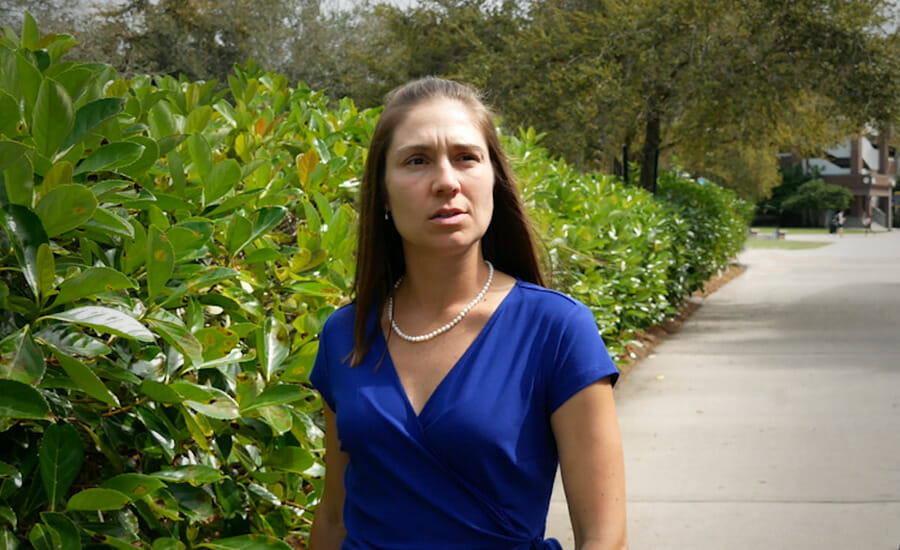Author: Amy Pastor, PE, CxA, LEED AP I Director of Commissioning and Sustainability
Buildings are rapidly evolving to meet sustainable and wellness standards. With more intense rating systems, it can be hard to determine which system allows the most synergy between a building’s health, environmental benefits and tenant well-being and comfort. The onset of the COVID-19 pandemic led many clients to ask for methods to streamline sustainable solutions with enhancements for the health and safety of people interacting with the built environment. I want to rundown where I see the opportunities to do this with dual certifications, why it matters and what it means for the future of buildings.
At EXP, our focus is always on bringing clients existing and emerging solutions for healthier, more sustainable buildings. Since the onset of the pandemic, we’re also concentrating on supporting clients in safely reoccupying spaces for people to operate and use them. To help in this effort, sustainability experts look for “crosswalks” between rating systems, which are similarities in the minimum requirements of two or more rating systems. Now, more than ever, we’re seeing the need for sustainable buildings, built with our health as a motivating factor. To make this possible, I recommend my clients consider dual certification of buildings, such as combining the U.S. Green Building Council (USGBC) LEED and the International WELL Building Institute (IWBI) WELL rating systems.
There are many signs guiding industry professionals to adopt dual certification. Tomorrow, dual ratings may not be a choice but a requirement, and EXP is looking ahead to prepare clients for tomorrow – today. However, it must be the right solution for our clients’ needs. With sustainability and public health at the forefront of global conversations, the suggestion has always been received well but with many questions. As someone who takes pride in transparency with clients, I’ve answered honestly when they ask, “Amy, is there a benefit to dual certification versus just LEED or just WELL certification?” This is a great question. It should be asked for every project. Never assume. Ask, and solicit, many questions.
Five years ago, my answer may have been different. Today, certification should be your baseline, single or dual. Many codes are incentivizing, or even mandating, green practices and certifications. The most important driver is the marketability of your portfolio. The LEED plaque signifies a firm commitment to sustainability and bettering your building(s) for their existence. WELL follows suit and adds the mandatory recertification component, every three years. This recertification reconfirms your building’s good standing – that you are as good as, or better than, you were on day one. As we all look to re-occupy, a plaque or a seal of approval from the USGBC or IWBI silently speaks to the safety of your building. I know that I will be looking for LEED or WELL certified hotels when traveling becomes my normal again. As an owner, you’ll see the financial benefits of lower energy and water bills. As a person, you’ll see the health benefits, as you provide a safe, clean and healthy building for your occupants.
In my article about energy metering, I talk about the importance of early intervention of sustainability and energy experts, the same applies to having a sustainable expert on board early for green building certification. Having an expert who can identify each opportunity, eliminate risk and help you navigate the certification process as successfully as possible is critical to achieving a single or dual certification. When involved early, I can perform a gap analysis – determining the “gap” from the project’s current design to a design that will reach the target level of certification. Energy and water carry high point values in the LEED rating system; early modeling helps drive building design considerations that impact the construction budget. When you can rely on points from these categories, and you know the cost of those strategies, decisions on where to focus the rest of your energy (i.e. time and money) becomes more streamlined and allows for creative, collaborative solutions to meeting thresholds in the sites, materials and innovation credit categories. Simply put, if you know the problem, you can eliminate or avoid the problem. The more upfront analysis you do with laying the framework for the path to certification, the closer you will come to hitting your target certification level, single or dual, and your project’s budget.
At EXP, we look at how to build immune systems for our future buildings and have outlined each opportunity to “crosswalk” aspects of both the LEED and WELL rating systems. It’s not always an easy process. When you look at your buildings, you don’t want to miss opportunities and be an ABC, “All but certified.” Buildings can be better and crosswalks and dual certifications can help us get there. EXP’s team of experts is prepared to help owners and operators become the first adopters of certifications and meet the sustainable needs of the built environment and the most valuable resource – people. Let us help you get there.
Looking for solutions? Let’s connect.

